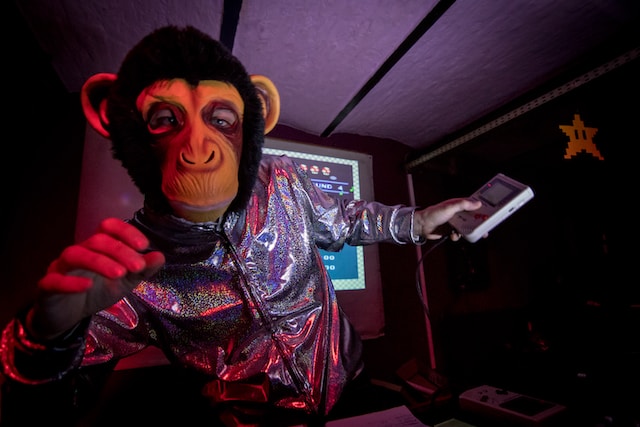Evolution of Indie Game Soundtracks

Indie games have come a long way since their inception. From pixelated graphics to intricate storytelling, they have evolved in numerous ways. One aspect that often goes unnoticed but plays a pivotal role in creating a memorable gaming experience is the music.
The Birth of a Musical Journey
In the early days of indie gaming, resources were limited, and small development teams had to make do with what they had. This constraint forced them to be innovative, not only in game mechanics but also in the audio department. The first indie games featured simplistic chiptune melodies reminiscent of classic arcade games. These catchy tunes may have been basic, but they had an undeniable charm.
The Humble Beginnings of Chiptunes
Chiptunes, also known as 8-bit music, emerged as the hallmark of indie game soundtracks. These compositions were created using the same hardware limitations that early gaming consoles faced. Musicians had to work within the confines of square waves, triangle waves, and noise channels to craft melodies that could resonate with players. Some iconic indie games from this era that embraced the chiptune sound include:
- “Cave Story” (2004) – Daisuke Amaya’s creation featured a charming chiptune soundtrack that perfectly complemented the game’s retro aesthetic.
- “Super Meat Boy” (2010) – Danny Baranowsky’s energetic chiptunes added a sense of urgency to the game, enhancing the overall experience.
These early indie game soundtracks proved that limitations could inspire creativity. Chiptunes became a symbol of indie game culture, and they continue to have a dedicated fan base today.
The Era of Eclectic Soundscapes
As indie game development gained traction, so did the diversity of soundtracks. Game composers and musicians started experimenting with various musical genres to match the evolving narratives and gameplay. This era saw a fusion of styles, resulting in soundtracks that were eclectic and emotionally resonant.
Exploring Musical Diversity
Indie game soundtracks from this period were marked by their willingness to explore a wide range of musical genres. Developers understood that music was not just background noise but a crucial element in storytelling. Some standout examples of this musical diversity include:
- “Bastion” (2011) – Darren Korb’s soundtrack for “Bastion” seamlessly blended folk and rock elements, enhancing the game’s immersive narrative.
- “Hotline Miami” (2012) – The pulsating electronic beats of “Hotline Miami” by various artists perfectly matched the game’s frenetic, neon-soaked action.
- “Transistor” (2014) – Darren Korb returned to deliver another masterpiece, this time infusing a futuristic electronic sound into “Transistor,” mirroring the game’s sci-fi setting.
These soundtracks demonstrated the capacity of indie games to evoke emotions and create memorable moments through music. The Evolution of Indie Game Soundtracks was now marked by its diversity and ability to adapt to different game worlds.
Modern Masterpieces
Today, indie game soundtracks have reached new heights of sophistication. With advancements in technology and the growing recognition of game music as an art form, composers have been given more creative freedom than ever before. This has resulted in soundtracks that are not only enjoyable within the game but also as standalone pieces of art.
Redefining Game Music
Modern indie game soundtracks have transcended their role as mere background music. They have become an integral part of the gaming experience, often contributing significantly to the narrative and atmosphere. Some modern masterpieces that have redefined indie game soundtracks include:
- “Hollow Knight” (2017) – Christopher Larkin’s hauntingly beautiful score for “Hollow Knight” adds depth to the game’s dark and mysterious world, making it an unforgettable experience.
- “Celeste” (2018) – Lena Raine’s emotive and introspective soundtrack for “Celeste” mirrors the game’s themes of self-discovery and overcoming adversity.
- “Oxenfree” (2016) – Andrew Rohrmann’s eerie and atmospheric compositions in “Oxenfree” create an unsettling ambiance that immerses players in a supernatural mystery.
These soundtracks showcase the evolution of indie game music into a form of art that can stand on its own. Composers are now pushing boundaries, experimenting with orchestral arrangements, ambient soundscapes, and innovative instrumentation to craft music that resonates deeply with players.
From the humble chiptunes of the past to the modern masterpieces of today, the journey has been one of constant innovation and artistic growth. Indie game soundtracks have evolved from being a mere accompaniment to becoming an integral part of the gaming experience, enhancing emotions, and enriching narratives.
As we continue to witness the evolution of indie games and their soundtracks, one thing is clear: the future holds even more exciting possibilities. With technology advancing and boundaries constantly being pushed, we can only imagine what musical wonders indie game soundtracks will bring in the years to come. One thing is for certain, though—the Evolution of Indie Game Soundtracks is a journey that will continue to captivate and inspire gamers and music enthusiasts alike.



